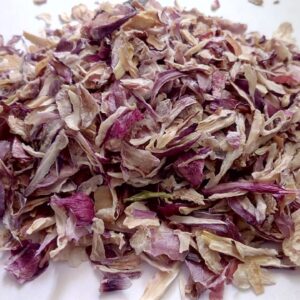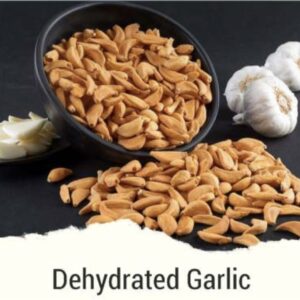Farm to Table: The Journey of Dehydrated Onions
Over the past couple of years, the farm to table movement has gained much interest amongst people who care about knowing what they put into their mouth. The dehydrated onions have been one of the products that have attracted much attention from customers due to the resourcefulness attached to this product in the food industry. From flavoring flavor within everyday recipes to being a defining ingredient in packaged snacks, dehydrated onions have become an essential element in both home kitchens and professional culinary applications. On the blog, we are going to take you through an interesting journey that a dehydrated onion will take-from when they are still fresh in the farm up to when they come onto your table. We will go into the processes meant to ensure that these onions retain their flavor and nutritional value; we will also learn the benefits accruing to your health from using dehydrated onions instead of their fresh ones. What are Dehydrated Onions? It is quite essential to know what dehydrated onions are before embarking on this tour. Dehydrated onions are fundamentally onions that have undergone some form of drying to remove the water from the onions while retaining their flavor, color, and nutritional profile. This method of preservation extends the shelf life, hence making them much more convenient for use in many recipes where fresh onions may not be readily accessible. They come in various forms, including dehydrated onion flakes, powder, and granules that could be utilized differently according to the usage. The Farm Stage: Onion Cultivation and Harvesting 1. Onion Cultivation From the farm, it is the journey of dehydrated onions. Onions are one of the most cultivated vegetables across the globe and best fit for temperate climates that have well-drained soils. When the farmers from the farmlands pick the best varieties of onion used, they often have strong flavors since the dehydration process intensifies the natural taste of the onion. Farmers directly sow the onion seeds or bulb onions, and then observe the crop growth. Thereafter, whether the crop will ripen nicely during harvest time depends on proper soil health and irrigation system and also pest control. Onions are mainly grown in large fields and harvested at the exact maturity of the bulbs, in late spring to early summer. 2. Collecting Onions Once mature onions reach a certain age they are collected in the harvest. This is an important step because onions should only be brought in at the right time so that they can achieve optimal quality in the dehydration process. After the onions have been harvested, they are left to dry in the field for a couple of days where their skins will dry and harden with minimal moisture. This will prepare the onions for other processes such as dehydration. The Dehydration Process: Fresh Onions to Dehydrated Onions 1. Decanting and skin peeling Right after harvesting, the onions will be taken directly to the factories for processing. Cleanliness follows in the factories by completely removing dirt, debris, and all the soil that may be attached to them. The peeling of onions is followed by washing; hence the onions can be sliced and cut for use. 2. Cutting and slicing Now cut onions into different dimensions depending on the different desired end products. Dehydrated onion flakes, powder, and granules vary in size according to the pieces of onions used. Onion flakes require longer slices, while onion powder requires smaller cuts of pieces. 3. Methods of Dehydration The onions are now ready to be dehydrated. It has an advantage over other dehydration methods because it is quite inexpensive. The pieces are placed in drying machines or dehydrators, using hot air circulation at low temperatures to remove moisture while preserving nutrients. During drying, the water content of an onion is reduced to about 80-90%. As a result, an onion loses considerable weight and volume but can be stored and transported efficiently at the cost of flavor and nutrients. 4. Packaging and Distribution Quality and Freshness After dehydration, the dehydrated onions are packed and then distributed. Packaging would further become an important activity to maintain the product quality. Packaging typically is done airtight, often through vacuum packaging so that the dehydrated onions don’t get any further moisture re entry and related spoilage. Often the dried onions are placed in nitrogen-flushed bags and bagged to maintain freshness. The information needed for the packaged product, which may include weight of the product, nutritional facts, and date of manufacture, often accompanies such packages. From here, dehydrated onions are spread across international markets, restaurants, and food manufacturers. This product boasts a shelf life that is quite impressive and can be very handy for food businesses to look for reliable supplies of ingredients with a diminished chance of spoilage. Benefits of Dehydrated Onions Over Fresh Onions 1. Shelf Life One of the most important benefits of dehydrated onions is longer shelf-life. In contrast, fresh onions go bad within weeks. Dehydrated onions, when preserved properly, are good for months and even years, which is excellent for emergency food supplies, as well as for camping trips or to cut back on waste. 2. Convenience Even dehydrated onions can help in time saving. They can save time because the peeled, chopped onions do not give their owner tears from onion crying while cutting; just take a handful of onion flakes or granules and go. It makes them suitable for busy household, professional kitchens, and food manufacturers. Owing to the lightness and lesser volume of dehydrated onions, it is cheaper to transport and store them compared with the fresh onions. This means greater efficiency is passed on to customers in terms of reduced prices without compromise on quality. 3. Uniform Taste Fresh onions differ in flavor for each season, varieties, and their growing region. Dehydrated onions, by contrast, are predictably flavored and thus ideal for food manufacturers seeking uniformity in their products. Applications of Dehydrated Onions in Cookery Dehydrated onions can be used in countless ways in nearly every kind
Farm to Table: The Journey of Dehydrated Onions Read More »



